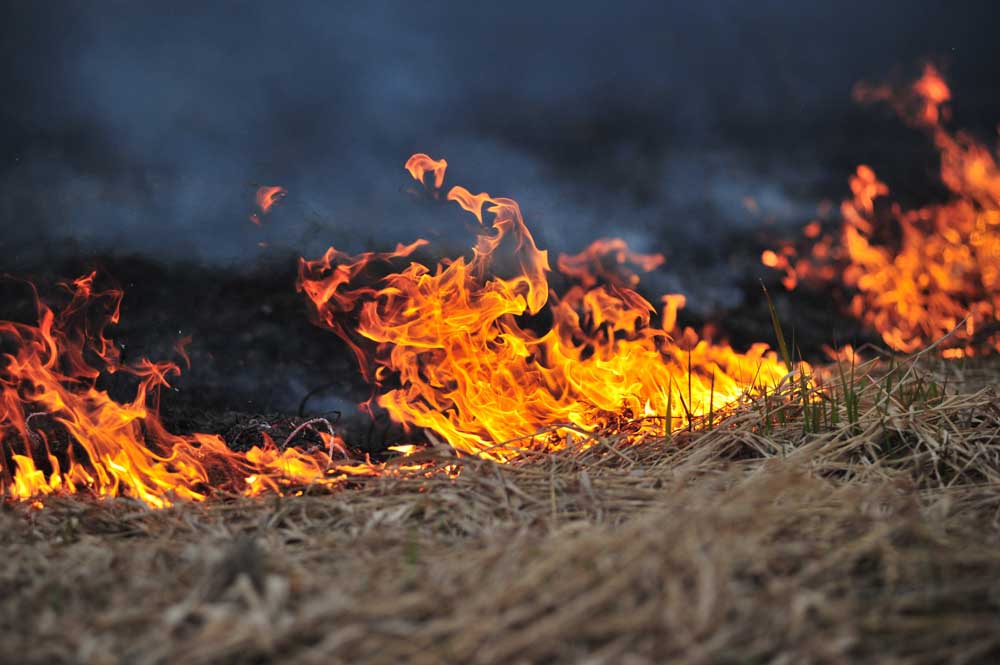Klamath Basin strawberry nurseries use cold to get their plants going
Published 2:26 pm Friday, November 15, 2013

- Scott Scholer, general manager of field operations for Lassen Canyon Nursery in Macdoel, Calif., points to a field of strawberry plants ready for harvest. Klamath Basin strawberry plants are sold and shipped to warmer climates, like Southern California, to grow and produce fruit.
KLAMATH FALLS — Strawberry plant growers use the unique Klamath Basin climate to their advantage. Sitting at 4,200-foot-elevation has its perks.
“We don’t do strawberries, we do strawberry nursery plants,” said Scott Scholer general manager of field operations, Lassen Canyon Nursery in Macdoel, just south of the Oregon-California border. “It’s a niche market in the Klamath Basin.”
The growing season starts around April 1, when the strawberry plants are put in the ground. They grow throughout the spring and summer. In October, the weather turns cold, making the plant act like it’s winter, building up starches.
That’s when strawberry nurseries harvest, removing the plants from the ground and shipping them to warmer climates, such as Southern California. Once there, the plant will act like it’s spring and time to make fruit, even though it’s only November or December. That way, the fruit is ready to harvest in the spring.
For Lassen Canyon Nursery, most of the plants go to commercial fruit growers in California. Some go to Florida, Louisiana and Arkansas. Plants are grown across the Klamath Basin, in Bonanza, Merrill, Malin, Tulelake and Dairy. But all of Lassen Canyon’s strawberry plant fields in the area are in Macdoel.
Lassen Canyon Nursery has weather detectors in the fields, and Scholer waits for at least 250 hours of sub-45-degree temperatures before harvest starts. This year it started Sept. 25. Scholer hoped to finish this week.
Initially, harvests are done at night from about 10 p.m. to 10 a.m. because the plants — especially the roots — need to be kept cool.
As long as the ground isn’t frozen, Scholer and his crews can keep harvesting. Scholer said in the past he has harvested in the snow, the layer of white insulating the ground and keeping it from freezing.
Once nighttime temperatures in Macdoel drop below 20 degrees, the roots can freeze. It’s too cold to harvest and operations are moved to days. On Oct. 27, Scholer and his crews harvested all night, then turned around and started the daytime shift that week.
Last week, a long line of machines worked through the Lassen Canyon Nursery fields in Macdoel.
“It looks like a railroad train,” Scholer said.
First came the chopper, which removed all the tops of the plants, like a giant double-edged razor blade, Scholer said.
Next came the harvester, pulling up the plants much like a potato harvester.
One type of harvester turns the plants in a giant cylinder on its side, knocking off all the dirt. Another harvester runs the plants up a bumpy track, again knocking off the dirt.
“We don’t sell dirt,” Scholer said with a smile.
At the end of the harvester the plants go into large white bins. A worker drives by to collect them, taking them to semitrailer trucks.
Lassen Canyon Nursery ships 26 semi-loads of strawberry plants a night, Scholer said. Each semi holds 66 bins.
“Everybody knows their job,” Scholer said of his crew circling the fields. “It’s just round and round and round.”
The trucks take the plants for processing, where workers trim the plants and roots and pack them into 1,000-plant containers to head for California planting.
Within hours of being taken out of a field, strawberry plants are on their way to Southern California.
The first plants of the harvest in September were replanted in Oxnard and Irvine, Calif., within days of being harvested in Macdoel.








